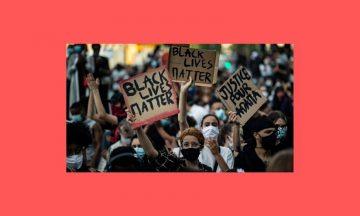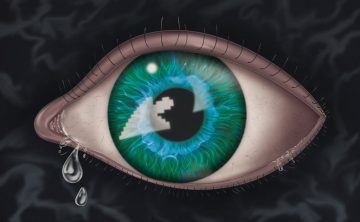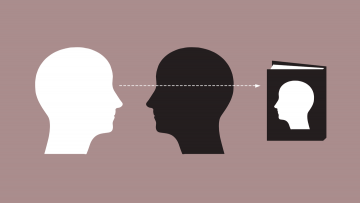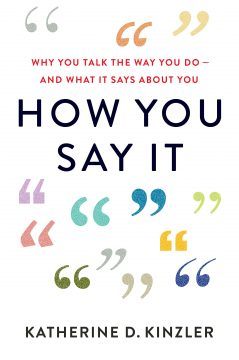Kevin Berger in Nautilus:
 Helen Fisher first appeared in Nautilus in 2015 with her article, “Casual Sex May Be Improving America’s Marriages.” Since then we’ve interviewed the biological anthropologist a host of times, anxious to hear her insights into the ties that bind and fray. Fisher made her name in popular science in 1992 with her book, Anatomy of Love, tracing the evolution of love from prehistoric to neuroscientific times. She’s the author of other books including Why Him? Why Her? Today she’s a senior research fellow at the Kinsey Institute and chief scientific advisor to Match.com.
Helen Fisher first appeared in Nautilus in 2015 with her article, “Casual Sex May Be Improving America’s Marriages.” Since then we’ve interviewed the biological anthropologist a host of times, anxious to hear her insights into the ties that bind and fray. Fisher made her name in popular science in 1992 with her book, Anatomy of Love, tracing the evolution of love from prehistoric to neuroscientific times. She’s the author of other books including Why Him? Why Her? Today she’s a senior research fellow at the Kinsey Institute and chief scientific advisor to Match.com.
Fisher’s research has found its way into many articles and books about the science of love and sex, including Love Drugs, a provocative new book by Brian D. Earl and Julian Savulescu, also featured this week in Nautilus. We could hardly create a Nautilus issue about love and sex without her voice. Her comments below represent her key points about the biology of love and sex, and are often counterintuitive and surprising. They are drawn from my interviews with her and presented on their own under short headings.
I Love You, Doctor
We put over 100 people who were madly in love into a brain scanner using fMRI. We noticed those who had fallen in love in the first eight months had a lot of activity in brain regions linked with intense feelings of romantic love. Those who had been madly in love for a longer period of time—from eight to 17 months—showed additional activity in a brain region linked with feelings of deep attachment. That vividly showed us the brain can easily fall happily and madly in love rapidly, but feelings of deep attachment take time. Romantic love is like a sleeping cat: It can be awakened at any time. But attachment, those feelings of cosmic, deep, profound love for another person, takes time.
More here.

 Andrew Gelman over at his website:
Andrew Gelman over at his website: Daniel Steinmetz-Jenkins interviews Roberto Unger in The Nation:
Daniel Steinmetz-Jenkins interviews Roberto Unger in The Nation: Sam Moyn over at the Quincy Institute:
Sam Moyn over at the Quincy Institute: Sarah Stoller in Aeon:
Sarah Stoller in Aeon: Hassina Mechaï over at the Verso blog:
Hassina Mechaï over at the Verso blog: When I think that it won’t hurt too much, I imagine the children I will not have. Would they be more like me or my partner? Would they have inherited my thatch of hair, our terrible eyesight? Mostly, a child is so abstract to me, living with high rent, student debt, no property and no room, that the absence barely registers. But sometimes I suddenly want a daughter with the same staggering intensity my father felt when he first cradled my tiny body in his big hands. I want to feel that reassuring weight, a reminder of the persistence of life.
When I think that it won’t hurt too much, I imagine the children I will not have. Would they be more like me or my partner? Would they have inherited my thatch of hair, our terrible eyesight? Mostly, a child is so abstract to me, living with high rent, student debt, no property and no room, that the absence barely registers. But sometimes I suddenly want a daughter with the same staggering intensity my father felt when he first cradled my tiny body in his big hands. I want to feel that reassuring weight, a reminder of the persistence of life. In early April, at the height of the pandemic lockdown, Gianpiero Petriglieri, an Italian business professor, suggested on Twitter that being forced to conduct much of our lives online was making us sick. The constant video calls and Zoom meetings were draining us because they go against our brain’s need for boundaries: here versus not here. “It’s easier being in each other’s presence, or in each other’s absence,” he wrote, “than in the constant presence of each other’s absence.”
In early April, at the height of the pandemic lockdown, Gianpiero Petriglieri, an Italian business professor, suggested on Twitter that being forced to conduct much of our lives online was making us sick. The constant video calls and Zoom meetings were draining us because they go against our brain’s need for boundaries: here versus not here. “It’s easier being in each other’s presence, or in each other’s absence,” he wrote, “than in the constant presence of each other’s absence.” I must admit
I must admit GIVEN THAT SHE
GIVEN THAT SHE In any case, for me—like many Buddhists, past and present—the most frightening part of karma isn’t a vision of torments in the next life, but the idea that my suffering in this life isn’t altogether random or circumstantial; it carries the trace of some previous action along with it. There’s something unbearable about causality when we think about it in the strictest terms: A virus, for example, can be transmitted through the simplest unconscious act, like scratching your nose with the same finger that was just wrapped around a subway pole. In contemporary physics, the limits of causality are explored in the field known as “quantum entanglement,” or what Einstein called “spooky action at a distance”: that is, the ability of distant entities to influence one another with no apparent force (like gravity) connecting them. Physicists know quantum entanglement happens, but how it works, and what power it exerts over everyday objects, is a subject of much debate.
In any case, for me—like many Buddhists, past and present—the most frightening part of karma isn’t a vision of torments in the next life, but the idea that my suffering in this life isn’t altogether random or circumstantial; it carries the trace of some previous action along with it. There’s something unbearable about causality when we think about it in the strictest terms: A virus, for example, can be transmitted through the simplest unconscious act, like scratching your nose with the same finger that was just wrapped around a subway pole. In contemporary physics, the limits of causality are explored in the field known as “quantum entanglement,” or what Einstein called “spooky action at a distance”: that is, the ability of distant entities to influence one another with no apparent force (like gravity) connecting them. Physicists know quantum entanglement happens, but how it works, and what power it exerts over everyday objects, is a subject of much debate. Of course, I had seen, next to the Gentleman’s Relish, the box of finely dusted Turkish delight, the halva, the packets of rosti; I had been with him to his birthplace in Romania and seen the places of his childhood, not once but twice; together with Alexander, I had been in the ancient forests with him, had picked wild raspberries and cracked open hazelnuts with a stone. I had helped him fill the box of Christmas gifts for our cousins stuck behind the Iron Curtain: chocolate, vitamins, medicine, Marmite, jam, tinned sardines, winter gloves and hats, stockings. But these things had featured only in the margin of my map of my father. At least, until that day when my friend asked: ‘Where’s your father from?’ More than thirty years have passed, and still I hover in the same state of postponed understanding, like the delayed response after the turning of a ship’s wheel or the pulling of a bell rope. Where was he from? Why do I need to know? Will I feel better if I do?
Of course, I had seen, next to the Gentleman’s Relish, the box of finely dusted Turkish delight, the halva, the packets of rosti; I had been with him to his birthplace in Romania and seen the places of his childhood, not once but twice; together with Alexander, I had been in the ancient forests with him, had picked wild raspberries and cracked open hazelnuts with a stone. I had helped him fill the box of Christmas gifts for our cousins stuck behind the Iron Curtain: chocolate, vitamins, medicine, Marmite, jam, tinned sardines, winter gloves and hats, stockings. But these things had featured only in the margin of my map of my father. At least, until that day when my friend asked: ‘Where’s your father from?’ More than thirty years have passed, and still I hover in the same state of postponed understanding, like the delayed response after the turning of a ship’s wheel or the pulling of a bell rope. Where was he from? Why do I need to know? Will I feel better if I do? In 2019, 62 worshippers performing Friday prayers were killed by a bomb blast in Nangarhar. Back in 2002, a fire broke out at a girl’s school in Makkah. Fifteen young girls died and 50 injured, allegedly because they were beaten back to go inside: they had not covered their heads. In 1987, more than 400 unarmed pilgrims, mostly Iranians, were killed in Makkah during a protest. The list goes on. One fact stands out: most of the outpouring of anger, sympathy and concern came from non-Muslim organisations, people and countries. Muslims were, by and large, silent. Even as the world seems to have come closer, with a more formalised structure of human rights, it has regressed into increasing hatred and acts of violence against the ‘other’, whoever it might be. It took the Christians six centuries of religiously supported wars and torture against Muslims and Jews to decide that they could safely replace religion with science. They colonised, ridiculed Muslims, spread false rumours, destroyed traditions of Muslim scholarship and weakened Muslim societies through carefully orchestrated propaganda. Islamophobia has increased since 9/11 with Muslims being held in Guantanamo Bay prison and tortured. Very few Muslim governments stood up to help them.
In 2019, 62 worshippers performing Friday prayers were killed by a bomb blast in Nangarhar. Back in 2002, a fire broke out at a girl’s school in Makkah. Fifteen young girls died and 50 injured, allegedly because they were beaten back to go inside: they had not covered their heads. In 1987, more than 400 unarmed pilgrims, mostly Iranians, were killed in Makkah during a protest. The list goes on. One fact stands out: most of the outpouring of anger, sympathy and concern came from non-Muslim organisations, people and countries. Muslims were, by and large, silent. Even as the world seems to have come closer, with a more formalised structure of human rights, it has regressed into increasing hatred and acts of violence against the ‘other’, whoever it might be. It took the Christians six centuries of religiously supported wars and torture against Muslims and Jews to decide that they could safely replace religion with science. They colonised, ridiculed Muslims, spread false rumours, destroyed traditions of Muslim scholarship and weakened Muslim societies through carefully orchestrated propaganda. Islamophobia has increased since 9/11 with Muslims being held in Guantanamo Bay prison and tortured. Very few Muslim governments stood up to help them. The story began earlier this week, when Yoho reportedly approached Ocasio-Cortez on the Capitol steps to inform her that she was, among other things, “disgusting” and “out of your freaking mind.” His analysis was directed at her (hardly novel) public statements that poverty and unemployment are root causes of the recent spike in crime rates in New York. On matters of criminal-justice reform, Yoho is of a decidedly conservative bent. Not long ago, he voted against making lynching a federal hate crime, saying that such a law would be a regrettable instance of federal “overreach.” According to a reporter for
The story began earlier this week, when Yoho reportedly approached Ocasio-Cortez on the Capitol steps to inform her that she was, among other things, “disgusting” and “out of your freaking mind.” His analysis was directed at her (hardly novel) public statements that poverty and unemployment are root causes of the recent spike in crime rates in New York. On matters of criminal-justice reform, Yoho is of a decidedly conservative bent. Not long ago, he voted against making lynching a federal hate crime, saying that such a law would be a regrettable instance of federal “overreach.” According to a reporter for  Melanie Rutkowski, PhD, of UVA’s Department of Microbiology, Immunology and Cancer Biology, found that
Melanie Rutkowski, PhD, of UVA’s Department of Microbiology, Immunology and Cancer Biology, found that  Justice Ruth Bader Ginsburg grew up with a solid old-school Brooklyn accent. She displays no trace of it in recordings of her work as a young litigator, but today, one can hear shades of it in her speech on and off the court. Why?
Justice Ruth Bader Ginsburg grew up with a solid old-school Brooklyn accent. She displays no trace of it in recordings of her work as a young litigator, but today, one can hear shades of it in her speech on and off the court. Why?